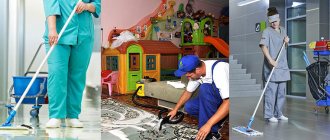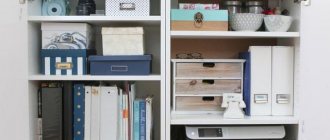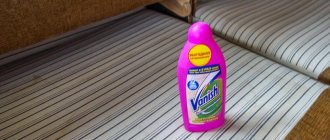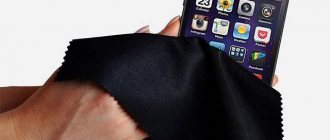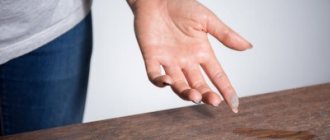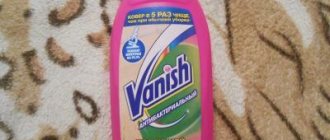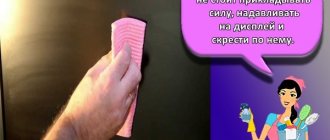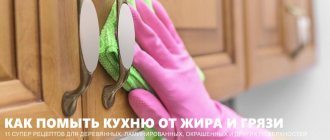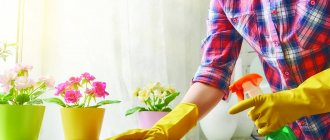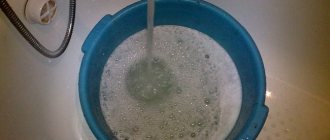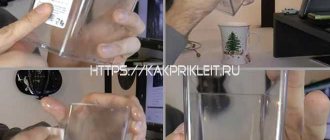Everyone has been familiar with the popular expression “cleanliness is the key to health” since childhood. For a person to feel good, he needs to eat right, rest well, lead an active lifestyle and breathe clean, cool air. Psychologists say that in a clean room productivity increases, mood improves and the duration of wakefulness increases. And one of the most important stages of cleaning a living space is wet cleaning.
What is wet cleaning and how often does it need to be done?
The task of wet cleaning is to humidify the air in the room, remove dust and other contaminants from surfaces. This must be done regularly, as dust accumulates very quickly and settles on surfaces, entering the room through ventilation shafts, open windows and doors. Dust is microscopic particles of different nature that rise into the air. In these grains, as well as in small hairs and animal fur, microscopic mites live, which can cause some diseases of the respiratory, immune and cardiovascular systems.
The optimal air humidity in an apartment or private house for a person is 40–60%.
Wet cleaning is carried out at least once every two days. If children or animals live in the apartment, the windows overlook a busy road, or the house is located in an industrial area, then you need to clean it even more often - once or twice a day.
Regular wet cleaning is carried out only with clean water. It is recommended to wash surfaces using household chemicals no more than once or twice a week. And if one of the family members is allergic or asthmatic, or a small child is crawling on the floor, then you can completely refuse to use cleaning and detergents for floor coverings.
What methods are used for disinfection?
- Physical. This method requires special equipment that uses ultraviolet light.
- Chemical. The most common method, as it uses disinfecting solutions, steam and chemicals.
- Biological. The discoveries of genetic engineering and microbiology are used.
Carrying out complete disinfection in a residential area is necessary when changing apartments, when a seriously ill or deceased resident is found, as well as in the presence of fungal spores.
It is recommended to carry out preventive disinfection regularly. For this purpose, solutions of disinfectants are used. The most common and high-quality solutions are “Septolite-Plus” and “Septolite-Tetra”.
Fungus disinfection
The most common fungi that appear on surfaces are Candida and Dermatophyton.
Quite unpleasant due to the long treatment period and long life span of the spores. At the first signs of fungus appearing in the room, you should treat all surfaces with which it could come into contact: dishes, walls, bathtub, things of a person with fungus.
You shouldn’t be afraid of this, the main thing is to take a disciplined and careful approach to disinfecting the room and add a disinfectant solution with each subsequent wet cleaning.
Disinfection for bacterial and viral infections
During epidemics, flu outbreaks and during times of decreased immunity, special attention should be paid to disinfecting the home in order to protect family and friends from possible danger.
Also, quite often there is already a sick person in the apartment, which means it is necessary to carry out measures to combat viruses and bacteria more often. Ideally, wet cleaning should be carried out daily at this time, gradually reducing to two to three times a week.
During wet cleaning, it is necessary to add a small amount of Septolite-Plus disinfectant to the water (in accordance with the instructions), the resulting solution can already be used for cleaning.
All washable surfaces are wiped, including doors, kitchen units, cabinets, windows, radiators. Be sure to wash the floor.
After cleaning, be sure to ventilate the room! Both bacteria and viruses consider dry and warm air to be the best conditions for life. Therefore, it is important to monitor the humidity level and air temperature.
Ventilation disinfection
If dust begins to appear in the house many times faster, and a stale smell appears in the room and the windows begin to fog up, then it’s time to check the ventilation.
The first step is to remove dirt from the ventilation; a regular vacuum cleaner can help with this; in case of severe blockages, it may even go as far as partially dismantling the ventilation. After cleaning, it is necessary to wipe all passages with a disinfectant solution.
By following these simple cleaning rules that everyone can do, you can keep your apartment in favorable conditions and reduce the risk of infection.
Return to list of publications
What is needed for wet cleaning
To ensure that the procedure does not take much time, you should take care of the equipment from the beginning. This optimizes the process, eliminating delays in finding washcloths, rags and other necessary “lotions”.
Inventory
The following equipment is required for cleaning:
- a bucket of clean cool water for washing floors,
- a basin with running water for washing window sills, radiators and other surfaces,
- a large cloth for cleaning floors (if special household chemicals are used for cleaning, you will need another cloth for final wiping with clean water),
- two or more soft cloth rags to remove dust (it all depends on the living space and the amount of furniture),
- hard sponge,
- a brush with stiff bristles for cleaning upholstered furniture,
- several melamine sponges for cleaning window sills,
- mop,
- broom with dustpan,
- vacuum cleaner,
- rubber household gloves of a suitable size,
- a telescopic brush, chair or stepladder for cleaning on the upper tier.
Household chemicals
For deep cleaning, additional household chemicals are needed, which allow you to more thoroughly remove dirt remaining after daily wet cleaning. Household chemicals should not be used every day, as chlorine vapors and other aggressive substances contained in detergents and cleaners rise into the air and become part of the home microclimate. To solve some cleaning problems during weekly wet cleaning, the following store-bought products may be useful:
- for cleaning floors - these are compositions sold in the form of concentrated solutions; they should be added to a bucket of water. The main task is disinfection of flooring, removal of biological contaminants, and aromatization of the room. Mr. is widely popular. Proper, Karcher, Dolphin Basic,
- for cleaning glass and mirrors - designed to remove stains from glass surfaces. Most often they come in the form of sprays. Some of the best window cleaning products are Mister Muscle, Clin, Frosch Glass Cleaner,
- for cleaning upholstered furniture - compositions designed to remove any type of dirt from textiles, including sofas, mattresses, and armchairs. These products can be produced in the form of tonic or foam; the most widely purchased are Bagi Stikhonit, Nordland, Vanish,
- for cleaning bathrooms - these are products designed to remove rust, calcium deposits and traces of water from tiles, sinks, and faucets. Available in various forms: gel, spray, foam. To solve such problems, you can choose “Mr. Muscle”, “Santik”, “Sillit”. This also includes disinfectants for cleaning toilets, for example, Cillit Bang, Domestos, Comet,
- for cleaning in the kitchen - these are detergents that cope with fatty deposits, as well as burnt food. They are used for cleaning ovens, hobs and other household appliances in the kitchen. Examples of products: Sanita, Cif, Schumanit.
Features of wet cleaning
Wet cleaning means not only the daily wiping of dust from surfaces in the house and humidifying the air, but also weekly cleaning with the implementation of global cleanliness measures. Due to the fact that time in our lives is limited, we have to optimize our work as efficiently as possible in order to spend a minimum of effort and time on cleaning, but at the same time have maximum results:
- We begin to restore order with preparatory cleaning, removing dust from chandeliers, cornices, shelves and upper tiers of cabinets.
- We always move from top to bottom, gradually moving to the middle tier, wiping window sills, furniture, decorative interior details and appliances.
- Finally, we vacuum, preparing the floor and baseboards for wet cleaning.
- We wipe the baseboards with a damp cloth and then wash the floor.
- Next, we open the windows so that fresh air can enter the room, after which it will become much easier to breathe and the floors will dry faster.
- Finally, we rub glossy surfaces and mirrors, since dust always settles on them first.
You need to start cleaning from the farthest rooms, gradually moving towards the exit from the apartment. Finally, we leave the hallway and bathroom; by this time, the floors in all other rooms will be dry and you will not carry dirt in them.
Removing dust
To quickly and efficiently complete this job, consider the following recommendations:
- wipe off dust with a damp cloth, starting from the tops of the cabinets,
- to avoid dust particles sticking to the wet surface, then wipe it with a dry cloth,
- Also wipe doors and door frames; if they are glossy or glass, then leave them,
- to make dust removal as convenient as possible, leave shelves and open surfaces completely empty, removing photo frames, books and accessories,
- wipe the surface of the window sill, radiators, if the radiators are covered with screens, remove them and wipe the heating devices,
- Wash the rag after processing each surface in a prepared basin with clean water,
- Lastly, wipe the baseboards and heating system pipes,
- Having finished with the dust, move on to the mirrors and glass - apply window cleaner and rub them with a dry cloth until they shine.
Cleaning upholstered furniture and carpets
If there are animals in the house, then there will definitely be fur on the sofas, armchairs and carpets, which must be gotten rid of daily. To quickly remove it, soak a brush with stiff bristles in a container of water and begin to remove hairs from the furniture from top to bottom with sharp movements. If the soft surfaces are not fleecy, then the hairs can be removed with a palm moistened with water. The situation is similar with carpets - you should walk over them with a damp brush to collect the pile. If there is dirt on the furniture or carpet, you can resort to cleaning products, using them according to the instructions.
When chemicals used to clean carpets or upholstered furniture evaporate, they release hazardous substances that can cause loss of consciousness and suffocation. Therefore, open the windows before using them and keep them closed throughout the cleaning process.
Kitchen and bathroom cleaning
Clean the bathroom and kitchen like this:
- using the “top to bottom” principle, we wipe the lamps and the upper tier of cabinets and shelves with a damp cloth,
- if there are unwashed dishes left in the sink, we correct the situation, and if the laundry basket in the bathroom is full, then we start the wash cycle,
- wash the cabinet facades with a damp sponge or napkin; if the walls are covered with tiles, then we use compounds for cleaning ceramics and clean the masonry with the hard side of the sponge, paying special attention to the seams,
- in the kitchen we clean the stove, oven, microwave oven and other household appliances - special compounds will help get rid of old dirt and grease,
- to clean the sink and faucet we use the same chemicals that are used to clean the bathroom - these are products for rust and water deposits,
- in the bathroom we treat the plumbing fixtures with anti-stain agent, and then wipe them with a damp cloth, treat the toilet with an antiseptic and proceed to washing the floors,
- As a rule, the floor covering in the kitchen and bathroom is tiles, and in order to effectively remove dirt and disinfect, we use special products.
Cleaning the hallway
When cleaning the hallway, additional cleaning tasks arise due to the constant presence of dirt that gets into the apartment along with street shoes and outerwear. After removing dust from the top tier, remove all shoes from the shoe rack and wipe them from the inside (first with a damp cloth and then with a dry one). Since the most dirt and debris settles in the hallway, wash all the shelves in the closet or dressing room. Before washing the floor, sweep or vacuum it thoroughly, and also polish mirrors and glass doors until they shine.
Take care of the cleanliness of the rug near the door - knock it out, and if necessary, wash it.
Mopping floors
For this work, it is important to choose the right mop (rag) attachment:
- A fluffy rag, popularly called “noodles”, is well suited for tiles - it consists of numerous braids that perfectly collect small debris and hair,
- sponge cloths are suitable for laminate, parquet, engineered wood and other surfaces that are sensitive to excess moisture,
- For linoleum and self-leveling floors, the best option would be flat rags with fine pile.
We start washing the floors from the farthest room, gradually moving towards the exit, leaving the hallway for last. We wash the cloth in water every 10 square meters to completely remove dust. It is not recommended to add disinfectants and aromatic agents to water when cleaning bedrooms. Before using commercial floor cleaning compounds, it is important to read the instructions and make sure that they are suitable for treating a particular floor covering.
A safe and effective floor cleaner is tea tree oil. The necessary bactericidal and aromatic effect is achieved with 3–5 drops of oil, which are diluted in a bucket of water.
How to do wet cleaning: procedure
Wet wiping is the key to cleanliness of interior items, upholstered furniture, flooring and other surfaces. Due to the labor-intensive process, many are afraid to start cleaning. But if you plan your actions in advance, you will reduce the period of torment by at least 1.5-2 hours.
Removing dust
Wet cleaning of an apartment begins with removing dust from the premises. To prevent contamination of already cleaned surfaces, always move from top to bottom.
- Stage 1. First, clean the chandeliers, sconces, cornices, tops of furniture cabinets, and wall shelves.
- Stage 2. On the middle tier, shelving, tables, window sills, door frames, and interior items are cleaned.
- Stage 3. At the very end, remove dirt from the floor covering. To avoid raising dust, use a vacuum cleaner.
The quality of wet cleaning largely depends on the literacy in the use of detergents and cleaning products.
To wet wipe furniture, it is recommended to use professional household chemicals:
- Sprays. To remove surface contaminants, use alcohol-containing aerosols - Sir Everyday Cleaner, Frosch Soda, Sonett Concentrate. They contain antiseptic additives, so they prevent the appearance of bacterial flora.
- Antistatic agents. To prevent dust from settling on your computer, TV and other equipment, they are wiped with antistatic solutions - Big D, Denkmit, Handboss Universal. Thanks to them, electrical appliances remain clean for 7-10 days.
- Furniture polishes. Lacquered and laminated coatings are gentle on products with degreasing, polishing and antistatic properties. Therefore, to wet wipe tables, whatnots and shelves, you should use Brait Classic Beeswax, Pronto Anti-Dust, Office Clean GT Tenzi.
Cleaning upholstered furniture and carpets
Not everyone knows what wet cleaning is, so they limit themselves to wiping horizontal surfaces and floor coverings. But if you leave upholstered furniture and carpets unattended, they will turn into a source of dust. To avoid this, you should vacuum with a washing vacuum cleaner:
- sofas;
- armchairs;
- banquettes;
- carpets.
Special products are used to clean carpets and upholstery:
- Vanish Gold;
- Nordland;
- Bugs Shtihonit;
- Green & Clean Professional;
- Astonish Fabric Refresher;
- Emsal Tuba;
- HG For Leather;
- Beckmann.
If you have four-legged friends in the house, get a steam cleaner. It copes well with foreign odors and surface contaminants.
If you don’t have special equipment, simply collect the fur with a damp cloth or your palm dipped in water.
It is recommended to use special impregnations for upholstered furniture - ScotchGard Protector, TexGuard, IntStyle. They form a protective film that prevents the formation of stains and the absorption of foreign odors.
Washing mirrors and glass
Cleaning windows and mirrors is an important component of wet cleaning. To remove dust and dirt use:
- suede rags;
- rolled soft paper;
- special wet wipes.
To ensure that there are no streaks left on surfaces, special chemicals are used:
- Clin;
- Winni's Multiuso Trigger;
- De La Mark;
- Purely;
- Sodasan;
- Sano Green;
- Frosch Glass Cleaner;
- Mister Muscle.
It is not advisable to use alcohol-containing products to wet wipe mirrors, as they leave streaks.
Washing door handles and frames
Door handles are places that are literally teeming with pathogenic bacteria. Therefore, universal antiseptic agents are used to clean them:
- Desecon;
- Sanimax;
- Pimol;
- Sterisil;
- Neosteril;
- Sanifekt;
- Neosoft;
- Soliox.
Mopping floors
For wet wiping of floor coverings, washing vacuum cleaners or mops are used. To clean them of contaminants, fungus and bacteria, use universal products:
- Ecover;
- etamine;
- Orange House;
- Freken Bock;
- Dolphin Basic;
- Bio Formula;
- Pronto;
- Friendly Organic;
- Karcher;
- Sarna;
- Muscle;
- Naturally it's clean;
- Attitude.
Dealing with greasy stains on the kitchen floor is much more difficult. To clean tiles, use fat-dissolving agents:
- Proper Cleanliness and hygiene Eucalyptus;
- Bio Formula Anti-fat Grapefruit;
- Cillit Bang Anti-fat + shine;
- Cif Green freshness;
- Freken Bock Lime.
After treatment with detergents, the floor is wiped again with a clean mop. If this is not done, the coating will be sticky, which will lead to rapid contamination.
Tips for cleaning and humidifying the air
There is special climate control equipment for air purification and humidification:
- air washers,
- humidifiers,
- climate complexes that humidify, purify and ionize the air.
If you do not have these devices, you can use the following recommendations:
- regularly carry out wet cleaning of the premises,
- ventilate rooms often,
- if the air is dry, wet a rag or towel and place it near the door - the water will evaporate and humidify the air,
- in winter, place a container of water on the radiator - this will eliminate the lack of moisture in the air,
- replace blankets and pillows made of natural materials (down, wool) with synthetic ones (sintepon, padding polyester, holofiber) - this will get rid of pathogenic mites that live in bed linen.
